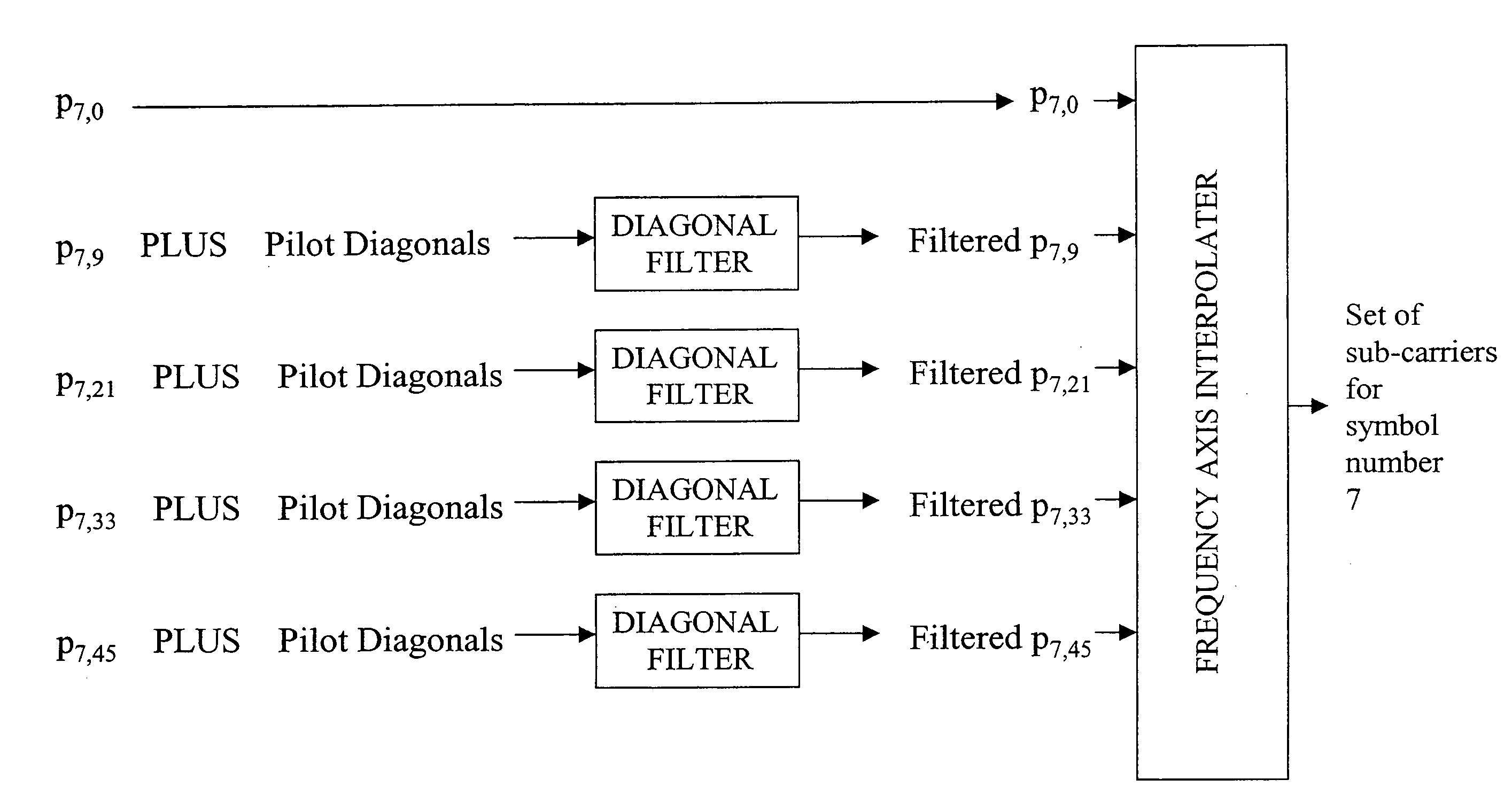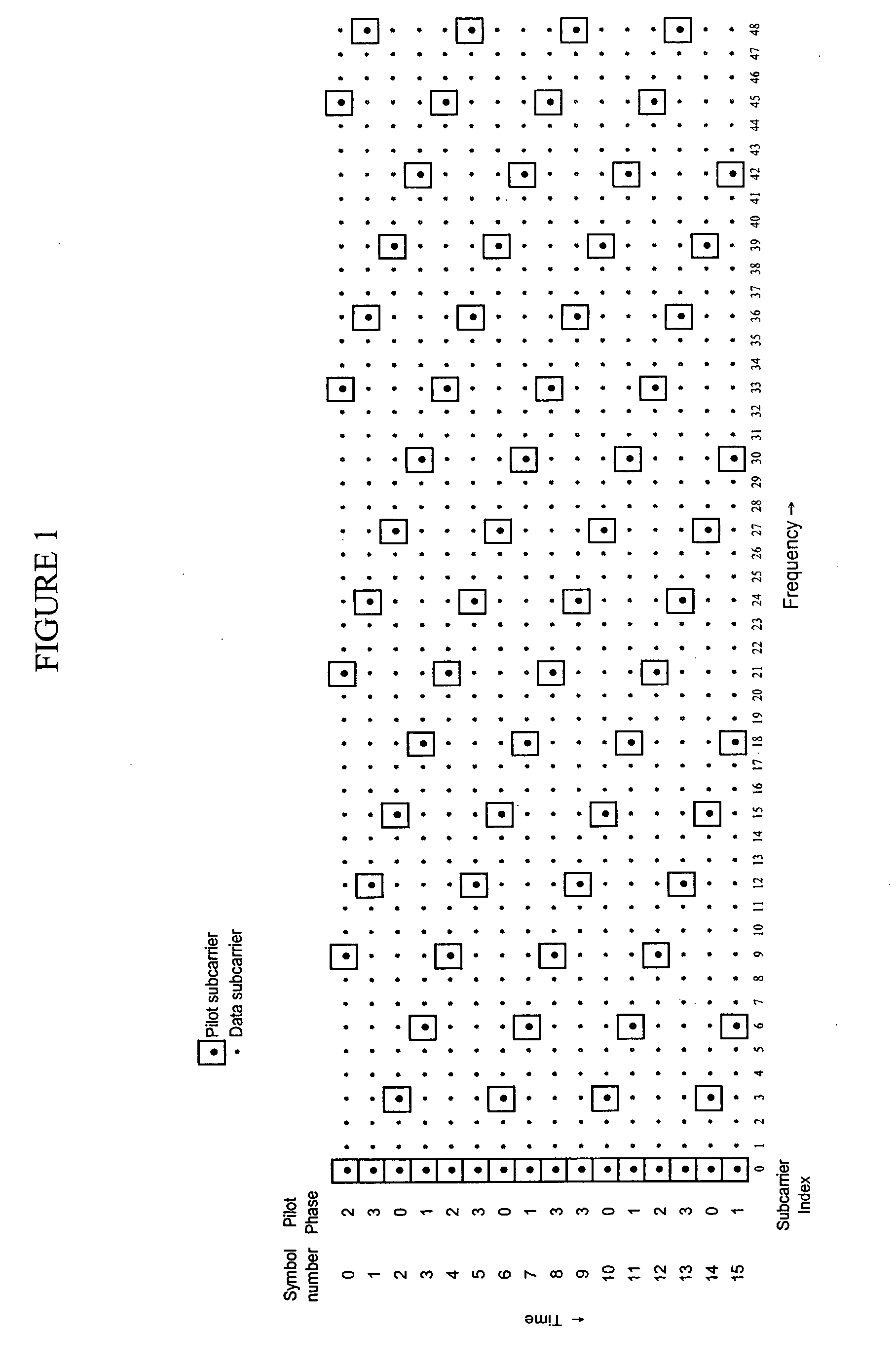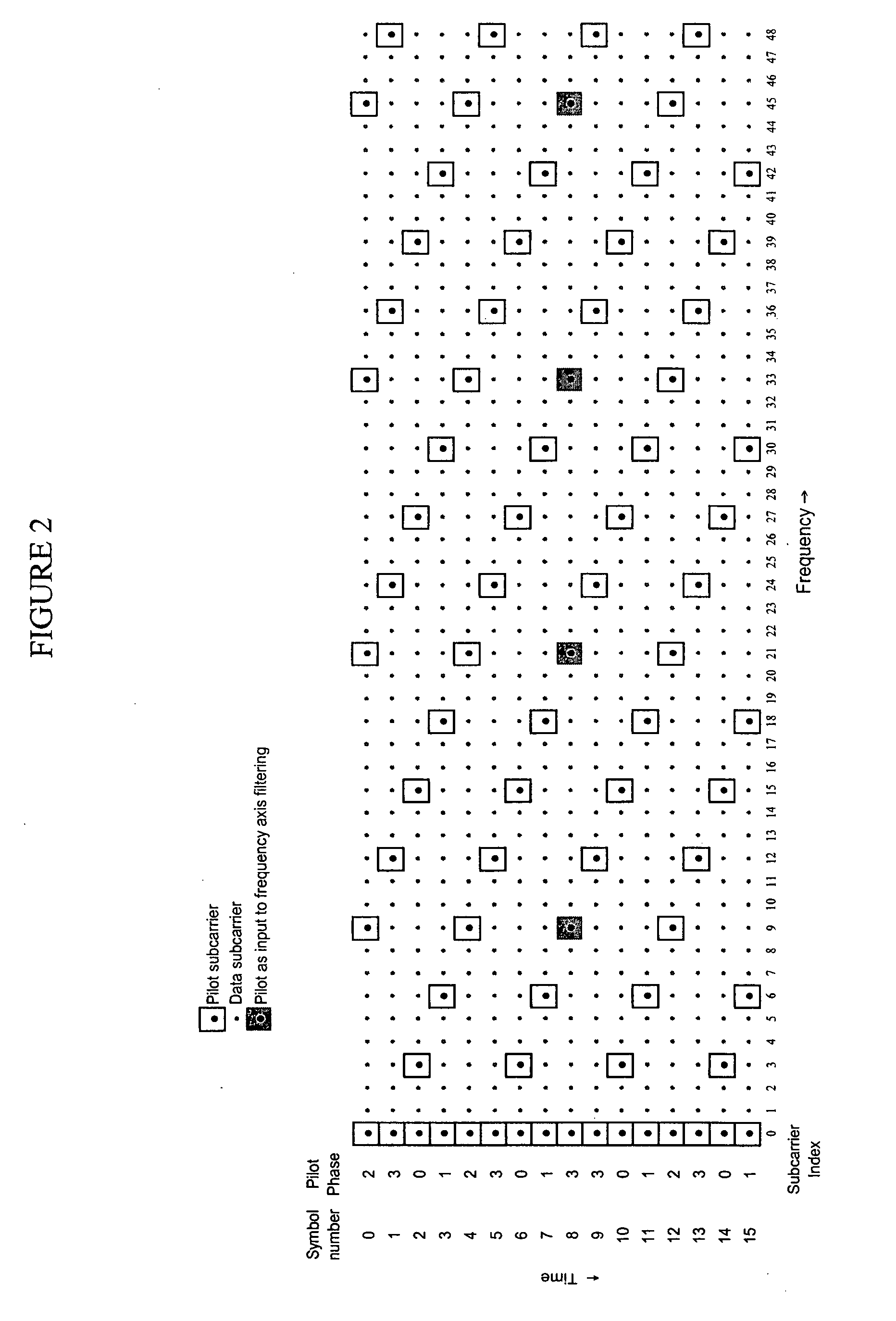OFDM receivers
a receiver and orthogonal frequency division technology, applied in the field of receiving ofdm signals, can solve the problems of high cost of implementing a system that interpolates by four in the frequency axis and then performs noise reduction filtering in the time axis, and can not meet the requirements of the time axis
- Summary
- Abstract
- Description
- Claims
- Application Information
AI Technical Summary
Benefits of technology
Problems solved by technology
Method used
Image
Examples
example 1
[0128]A specific example of the diagonal filtering as described above will now be described with reference to FIGS. 6 and 7.
[0129]This example shows the application of a 15 tap noise reducing diagonal filter to a channel estimator using frequency axis interpolation.
[0130]FIG. 6 shows a subset of the time frequency plane for 16 consecutive OFDM symbols. As in FIGS. 1 to 4, the scattered pilots are highlighted in the diagram. In this example, the channel estimate for symbol number 7 is being estimated (symbol number 0 is the most recently received).
[0131]The channel estimation is performed by interpolating by a factor 12 between the scattered pilot sub-carriers (in this case sub-carriers numbered 0, 9, 21, 33, 45 i.e. those scattered pilots falling within symbol 7). The result is a channel estimate for each of the sub carriers i.e. the band at symbol 7 shown by the dotted lines in FIG. 6. This channel estimate is usually a single complex value per sub-carrier and is used by the equali...
example 2
[0139]A second specific example of the diagonal filtering as described above will now be described with reference to FIGS. 8 and 9.
[0140]This example shows the application of noise reducing diagonal filter to a channel estimator using time axis interpolation.
[0141]FIG. 8 shows a subset of the time frequency plane for 16 consecutive OFDM symbols. As in FIGS. 1 to 5, the scattered pilots are highlighted in the diagram. In this example, the channel estimate for symbol number 7 is being estimated (symbol number 0 is the most recently received).
[0142]In the absence of filtering (i.e. using the raw pilot values), the channel estimate is formed by first interpolating between scattered pilots in the time axis (upsampling by a factor 4) and then using those channel estimates to upsample in the frequency axis (upsampling by a factor 3).
[0143]The interpolation in time would produce all values at every 3rd sub-carrier including channel estimates for p7,0, p7,31, p7,6 and so on. In FIG. 8, the g...
PUM
 Login to View More
Login to View More Abstract
Description
Claims
Application Information
 Login to View More
Login to View More - R&D
- Intellectual Property
- Life Sciences
- Materials
- Tech Scout
- Unparalleled Data Quality
- Higher Quality Content
- 60% Fewer Hallucinations
Browse by: Latest US Patents, China's latest patents, Technical Efficacy Thesaurus, Application Domain, Technology Topic, Popular Technical Reports.
© 2025 PatSnap. All rights reserved.Legal|Privacy policy|Modern Slavery Act Transparency Statement|Sitemap|About US| Contact US: help@patsnap.com



